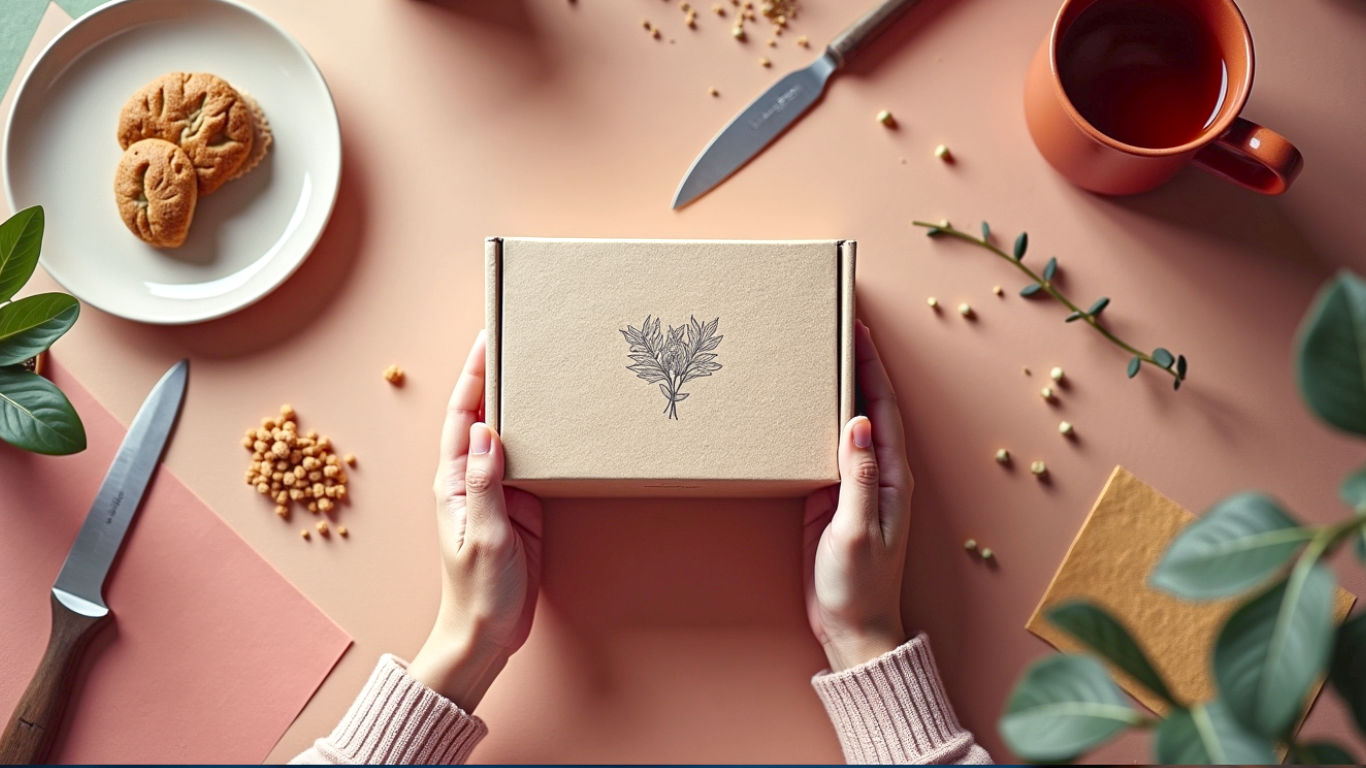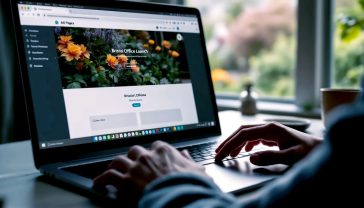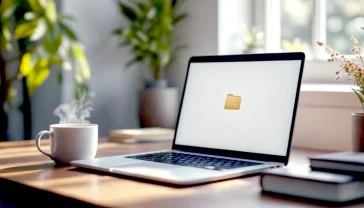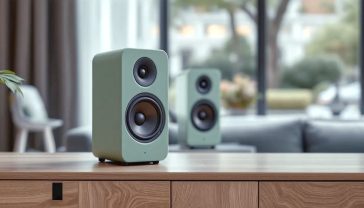Think Inside the Box: The Ultimate Guide to Innovative Packaging and Labelling
Discover the ultimate guide to packaging and labelling in the UK. Learn about sustainable choices, psychological tricks, and smart tech to create an unforgettable brand experience.

This post may contain affiliate links. If you make a purchase through these links, we may earn a commission at no additional cost to you.
Ever picked up a product just because the box looked cool? Or felt a little thrill of excitement opening a beautifully wrapped online order? If you’ve nodded yes, you’ve experienced the quiet magic of packaging. It’s more than just a cardboard box or a plastic wrapper; it’s the silent salesperson on the shelf, the first handshake a brand offers, and a promise of what’s inside.
In a world buzzing with endless choices, from the biscuit aisle at Tesco to the countless craft gins online, packaging has become a battleground. It’s where brands fight for your attention. But it’s not just about being the loudest or the brightest anymore. Today, the cleverest brands are thinking inside the box. They’re using packaging to tell stories, solve problems, and even help save the planet.
This guide is your peek behind the curtain. We’ll unbox the secrets of great packaging and labelling, from the clever psychology that makes you choose one brand over another to the nifty tech that’s changing the game. We’ll look at how a simple label can build trust, how a well-designed box can create an unforgettable experience, and how the choices we make can shape a greener future. Whether you’re a budding entrepreneur with a brilliant idea, a curious shopper, or just someone who appreciates clever design, get ready to discover why the box is often just as important as what’s in it.
The Unseen Power of the Package: Why First Impressions Count
Before you ever taste the chocolate, sip the tea, or try the face cream, you meet its packaging. And in that split second, your brain makes a whole host of judgements. Is this product posh or a bargain? Is it trustworthy or a bit dodgy? Is it for someone like me? This isn’t just guesswork; it’s a science, and it’s called shelf appeal.
The Psychology of a Shopping Basket
Think of a supermarket shelf as a massive, noisy party. Every product is shouting, “Pick me! Pick me!” The packaging is its outfit, its way of catching your eye across the crowded room. Brands use a whole toolkit of psychological tricks to make sure their product is the one you decide to talk to.
Colour is King: Colour is the first thing we notice, and it speaks to us in a language we don’t even realise we understand.
- Green screams natural, organic, and healthy. Think of brands like Innocent Smoothies or the fresh vegetable aisle.
- Black and Gold whisper luxury and sophistication. You’ll see this on premium chocolates like Hotel Chocolat or high-end whiskies.
- Red is bold, energetic, and demands attention. It’s no accident that brands like Coca-Cola and KitKat use it to stand out.
- Blue suggests trust, calm, and reliability. It’s often used by banks and tech companies, but on food, it can be tricky—apart from things like milk or water, there aren’t many naturally blue foods, so our brains can find it a bit off-putting.
Shape and Texture Matter: It’s not just what you see, but what you feel. A product in a uniquely shaped container, like the iconic Marmite jar or a Toblerone bar, is instantly recognisable. The texture plays a part too. A rough, recycled cardboard box feels earthy and honest, while a smooth, glossy finish feels sleek and modern. Brands like Lush use minimal, often-recycled packaging that feels as natural as their products claim to be.
Building a Brand Without Saying a Word
Great packaging does more than just grab attention; it tells the brand’s story. It’s the visual summary of everything the company stands for.
Take BrewDog, the Scottish craft beer giant. Their packaging is rebellious and loud, with bold, graffiti-style fonts and in-your-face names. It perfectly captures their punk ethos. You know exactly what you’re getting before you even taste the beer: something with attitude.
On the other hand, consider The Duchy Organic range, originally started by King Charles. The packaging is simple, elegant, and uses muted, earthy colours. It communicates heritage, quality, and a connection to the British countryside. Both are brilliant examples of packaging as a storyteller. It creates an identity that shoppers can connect with, turning a simple purchase into a statement about who they are.
The Label Isn’t Just a Sticker: It’s a Contract of Trust
If the packaging is the outfit, the label is the conversation. It’s where the brand looks you in the eye and tells you what you need to know. But in the UK, it’s not just a chat—it’s a legal requirement. Getting it wrong can lead to hefty fines or even products being pulled from the shelves.
The Must-Haves: What Legally Needs to Be on a Label
The law is there to protect us, the shoppers. It makes sure we know exactly what we’re buying, especially when it comes to food and drink. Here’s the essential checklist for most products sold in the UK:
- The Name of the Product: Sounds obvious, but it has to be a clear, honest description of what’s inside. You can’t call something a “beef pie” if it’s mostly filled with vegetables.
- List of Ingredients: All ingredients must be listed in order of weight, from most to least.
- Allergen Information: This is a big one. The 14 major allergens (like nuts, gluten, milk, and soya) must be emphasised—usually in bold—so they are easy to spot. This is thanks to “Natasha’s Law,” which came into effect after the tragic death of a teenager who had an allergic reaction to a pre-packaged sandwich.
- Net Quantity: How much of the product are you actually getting? This is usually in grams, kilograms, millilitres, or litres.
- ‘Best Before’ or ‘Use By’ Date: A ‘Use By’ date is about safety and is for foods that go off quickly, like milk or ready-made salads. You shouldn’t eat them after this date. A ‘Best Before’ date is about quality. The food is still safe to eat after this date, but it might not be at its best—think biscuits that have gone a bit soft.
- Name and Address of the Manufacturer: You need to know who is responsible for the product.
- Country of Origin: For some products, like beef or olive oil, you have to say where they came from.
- Nutritional Information: The famous “traffic light” system you see on the front of packs is a brilliant piece of British innovation. It helps shoppers quickly see if a product is high (red), medium (amber), or low (green) in fat, saturated fat, sugars, and salt. While the front-of-pack traffic lights are voluntary, a more detailed nutritional breakdown on the back is usually mandatory.
Beyond the Basics: Using Labels to Build a Connection
While the legal stuff is non-negotiable, clever brands use the label to do so much more. They use it to build trust and connect with their customers on a deeper level.
Telling the Story: Labels are a great place for a bit of storytelling. A jam label might tell you which farm the strawberries came from. A coffee bag might introduce you to the farmer who grew the beans. This is called provenance, and it’s hugely powerful. It makes the product feel more personal and authentic. Yeo Valley, a Somerset-based dairy company, are masters of this. Their packaging is covered in folksy illustrations and stories about their farm, making you feel like you’re buying from a friendly neighbour.
Showing Your Values: Labels can also be a badge of honour. Think of symbols like:
- Fairtrade: Guarantees that farmers in developing countries have been paid a fair price.
- Leaping Bunny: The gold standard for cruelty-free products, meaning no animal testing was involved.
- Red Tractor: A UK-specific certification that assures food is farmed and prepared to good standards.
These symbols are shortcuts to trust. They show that a brand shares your values, and for many shoppers, that’s more persuasive than any flashy advert.
The Unboxing Revolution: It’s Not Just a Delivery, It’s an Experience
Remember when an online order arrived in a plain brown box with a bit of bubble wrap? Those days are disappearing. Welcome to the age of the unboxing experience.
Driven by the explosion of e-commerce and the power of social media, opening a package has become a moment of theatre. Influencers on YouTube and TikTok rack up millions of views simply by opening things. Brands have realised that the moment a package lands on your doormat is a golden opportunity to make a brilliant impression. It’s the new shop front.
Crafting the Perfect Unboxing Moment
Creating a memorable unboxing experience isn’t about spending a fortune. It’s about being thoughtful and creative.
The Personal Touch: A little effort goes a long way. A simple, handwritten thank-you note can make a customer feel genuinely appreciated. Some brands, like the online gift company Not on the High Street, often include notes from the small business owner who made the product. It turns a transaction into a human connection.
Branded Everything: Instead of a generic box, why not a box printed with your logo or a fun pattern? Custom-printed tissue paper, branded tape, or even a sticker can transform a boring package into a beautiful one. It reinforces the brand identity and makes the whole experience feel more premium and special.
The Big Reveal: Great unboxing is all about the journey. It’s like a pass-the-parcel game for one.
- The Outer Box: Is it sturdy? Easy to open? Does it hint at the excitement inside?
- The First Layer: You open the box. Is there a layer of beautiful tissue paper? A welcome card sitting on top?
- The Filling: What’s protecting the product? Gone are the horrible polystyrene peanuts. Now, brands use things like crinkle-cut shredded paper in brand colours, or even custom-made inserts that hold the product perfectly in place.
- The Product Itself: Finally, the main event. Is it wrapped or presented in a special way?
- The Extras: What else is in the box? A free sample? A discount voucher for the next purchase? A little bag of sweets? These small surprises create delight.
A company that nails this is Glossier, the beauty brand. Their products arrive in a signature pink bubble-wrap pouch inside a beautifully designed box. It’s so iconic that people reuse the pouches as makeup bags. It’s clever, it’s shareable on Instagram, and it makes customers feel like they’re part of an exclusive club.
Thinking Green: The Rise of Sustainable Packaging
The tide is turning against plastic. We’ve all seen the heartbreaking images of plastic pollution in our oceans on David Attenborough’s Blue Planet. Shoppers, especially younger generations, are demanding that brands do better. Sustainability is no longer a “nice-to-have”; it’s a business essential. And packaging is right at the heart of the conversation.
The 3 Rs of Eco-Friendly Packaging: Reduce, Reuse, Refill
The goal is to move away from the old linear model of “take, make, dispose” and towards a circular economy, where we keep resources in use for as long as possible.
1. Reduce: Less is More The simplest step is to just use less stuff. This is called light-weighting. Can a glass jar be made with thinner glass without breaking? Can a cardboard box be redesigned to use less material? Brands are also ditching unnecessary layers. Do you really need your toothpaste to come in a box? Some brands are now selling “naked” products, with no packaging at all. Lush is a pioneer here with its solid shampoo bars and soaps.
2. Reuse: Give it a Second Life This is about designing packaging that people want to keep and use again. Think of a beautiful biscuit tin that you can later use for storing odds and ends, or a sturdy gift box that’s perfect for keepsakes. It turns waste into something valuable.
3. Refill: The Return of the Milkman Model The idea of refilling containers is making a huge comeback.
- In-Store Refills: Major supermarkets like Asda and Waitrose are trialling refill zones where you can bring your own containers to fill up on things like pasta, cereal, and washing-up liquid.
- Refill-at-Home: Brands are selling “refill pouches” that use much less plastic than a new bottle. You simply buy one main bottle (the “bottle for life”) and then top it up from the pouches. Companies like Method and Faith in Nature do this well.
- Return and Refill: Some companies, like the zero-waste delivery service Loop, have brought the milkman model into the 21st century. They deliver products like orange juice and ice cream in durable, returnable containers. When you’re done, you leave the empties on your doorstep, they’re collected, professionally cleaned, and refilled for the next customer.
The Wonderful World of New Materials
Scientists and designers are cooking up some amazing alternatives to traditional plastic.
- Compostable Plastics (PLAs): Made from plant starches like corn or sugarcane, these look and feel like plastic but are designed to break down in an industrial composter. You’ll often see them used for coffee cups or food containers. However, they’re not a perfect solution—they won’t break down in your garden compost heap and can contaminate plastic recycling if you put them in the wrong bin.
- Mushroom Packaging: Yes, you read that right! This stuff is made from mycelium, the root structure of mushrooms. It can be grown into any shape you need and is completely compostable at home. It’s a brilliant, natural alternative to polystyrene.
- Seaweed Pouches: A British company called Notpla (short for “not plastic”) makes edible and biodegradable pods from seaweed. They’ve been used at events like the London Marathon to hand out water to runners, eliminating the need for thousands of plastic bottles.
- Paper and Cardboard Innovation: Don’t forget good old paper. New techniques are making it stronger and more water-resistant, allowing it to replace plastic in surprising ways. For example, some companies are now creating paper-based bottles for drinks.
The key challenge is making sure these new materials are genuinely better for the environment and that we have the right systems in place to dispose of them properly.
The Future is Smart: When Packaging Gets a Brain
What if your packaging could talk to you? Or tell you if your food has gone off? Or even reorder itself when you’re running low? This isn’t science fiction; it’s the world of smart packaging, and it’s already starting to happen.
QR Codes and Augmented Reality (AR)
You’ve probably seen those square, black-and-white patterns called QR (Quick Response) codes on everything from posters to restaurant menus. In packaging, they’re a gateway to a whole world of digital information.
Scanning a QR code on a bottle of wine with your phone could take you to a video of the vineyard where the grapes were grown. A code on a packet of chicken could show you the farm it came from and suggest a recipe. It’s a simple way to give customers more information than you could ever fit on a label.
Augmented Reality (AR) takes this a step further. Instead of just going to a website, AR overlays digital information onto the real world through your phone’s camera. An Australian wine brand, 19 Crimes, became famous for this. When you point your phone at the label, the convict pictured on the bottle comes to life and tells you their story. It’s fun, it’s memorable, and it got everyone talking.
NFC: The Power of a Simple Tap
NFC (Near Field Communication) is the same technology that allows you to pay for things with a tap of your bank card or phone. Tiny, cheap NFC chips can be embedded into packaging.
When you tap your phone on the label, it can:
- Prove Authenticity: For luxury goods like expensive whisky or designer handbags, an NFC chip can confirm that the product is genuine, fighting the multi-billion-pound counterfeit market.
- Provide Information: It could open a webpage with instructions, ingredients, or allergy information. For people with visual impairments, it could even read the information out loud.
- Engage and Reward: A tap could enter you into a competition, unlock exclusive content, or add loyalty points to your account.
Active and Intelligent Packaging
This is where it gets really clever.
- Intelligent packaging monitors the condition of the product. Imagine a milk carton with a sensor on the label that changes colour as the milk gets older, giving you a much more accurate idea of when it’s about to go off than a simple ‘Use By’ date. This could drastically reduce food waste.
- Active packaging improves the condition of the product. This includes things like special pads in fruit punnets that absorb the gases that cause fruit to ripen too quickly, keeping it fresh for longer. Or self-heating coffee cups and self-cooling beer cans.
These technologies have the potential to make our food safer, reduce waste, and give us more confidence in the products we buy.
Putting It All Together: Tips for Getting Packaging Right
Whether you’re launching a new brand of chutney from your kitchen table or rethinking the packaging for an established company, the principles are the same. It’s about balancing creativity, practicality, and responsibility.
1. Know Your Customer: Who are you trying to sell to? A student looking for a cheap and cheerful snack will be attracted to very different packaging than a food connoisseur looking for an artisanal treat. Do your research. Understand their values, their lifestyle, and what catches their eye.
2. Know Your Brand: What is your story? What do you stand for? Your packaging should be a physical representation of your brand’s personality. Be consistent across everything you do, from your logo to your colours to the tone of voice you use on the label.
3. Think About the Journey: Your product will go on a long journey before it reaches the customer.
- On the Shelf: How will it look next to its competitors? Will it stand out or blend in? Go to a shop and look at the aisle where your product will sit. What can you do differently?
- In Transit: If you’re selling online, your packaging needs to be tough enough to survive the postman. There’s nothing worse than a beautiful product arriving broken.
- In the Home: How will the customer use it? Does it need to be easy to open? Can it be resealed? Is it easy to store in a cupboard or fridge? Good packaging solves these little problems.
4. Don’t Forget the Planet: Make sustainable choices wherever you can. Can you use recycled materials? Is your packaging recyclable? Can you reduce the amount of material you use? Your customers will thank you for it.
5. Test, Test, and Test Again: Before you spend a fortune on a big print run, get some feedback. Create mock-ups of your designs and show them to potential customers. Ask them what they think. Which one do they prefer? What does it make them think about the product? This feedback is priceless.
Packaging is a fascinating blend of art, science, and psychology. It’s a field that’s constantly changing, driven by new technologies, shifting consumer tastes, and the urgent need to protect our planet. The brands that succeed will be the ones that understand that a box is never just a box. It’s an opportunity—to connect, to delight, and to build a brand that people truly love.
Further Reading
For those interested in diving deeper, here are some highly respected resources in the UK packaging and sustainability space:
- WRAP (The Waste and Resources Action Programme): A leading UK charity that works with governments, businesses, and communities to improve resource efficiency. Their website is a goldmine of research and reports on sustainable packaging.
- The Packaging Federation: The main trade association for the UK packaging manufacturing industry. A great source for industry news and insights.
- Hubbub: A creative charity that runs campaigns to make greener choices feel more mainstream and fun, often with a focus on packaging and waste.
- The Chartered Institute of Marketing (CIM): Offers a wealth of articles and case studies on branding and marketing, where packaging plays a crucial role.






